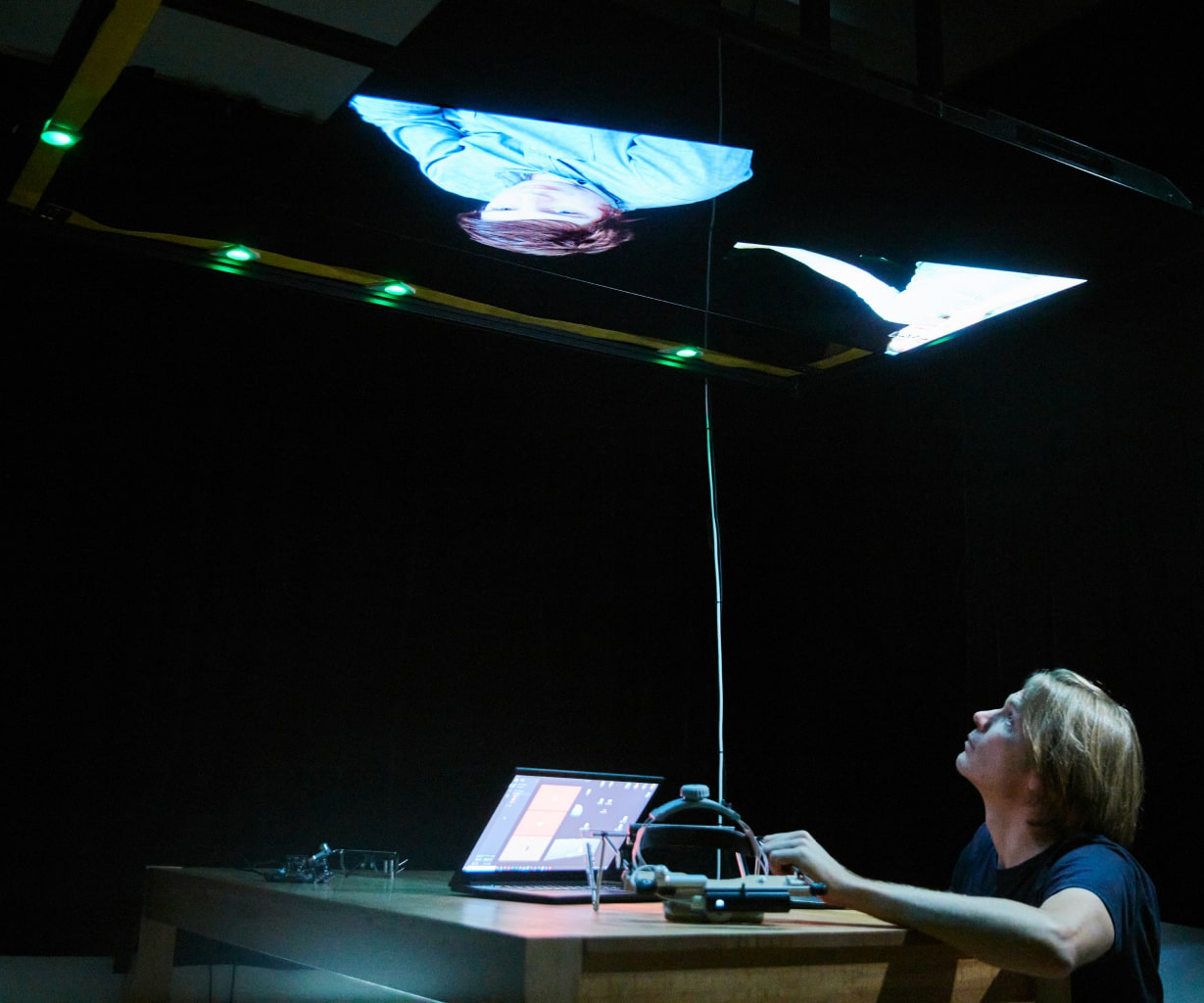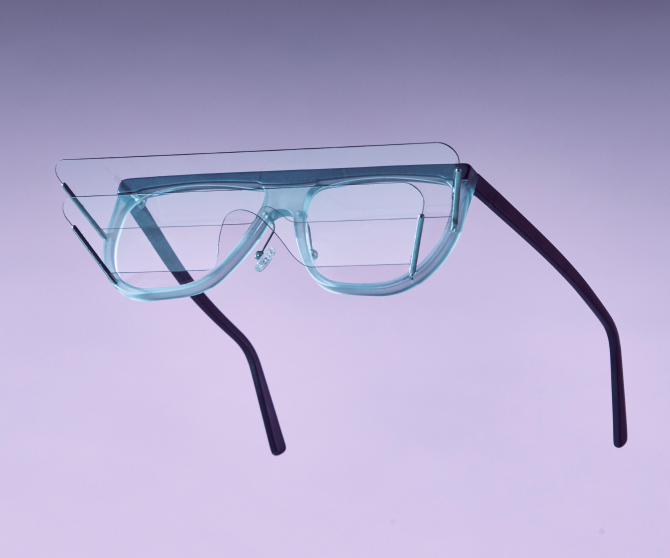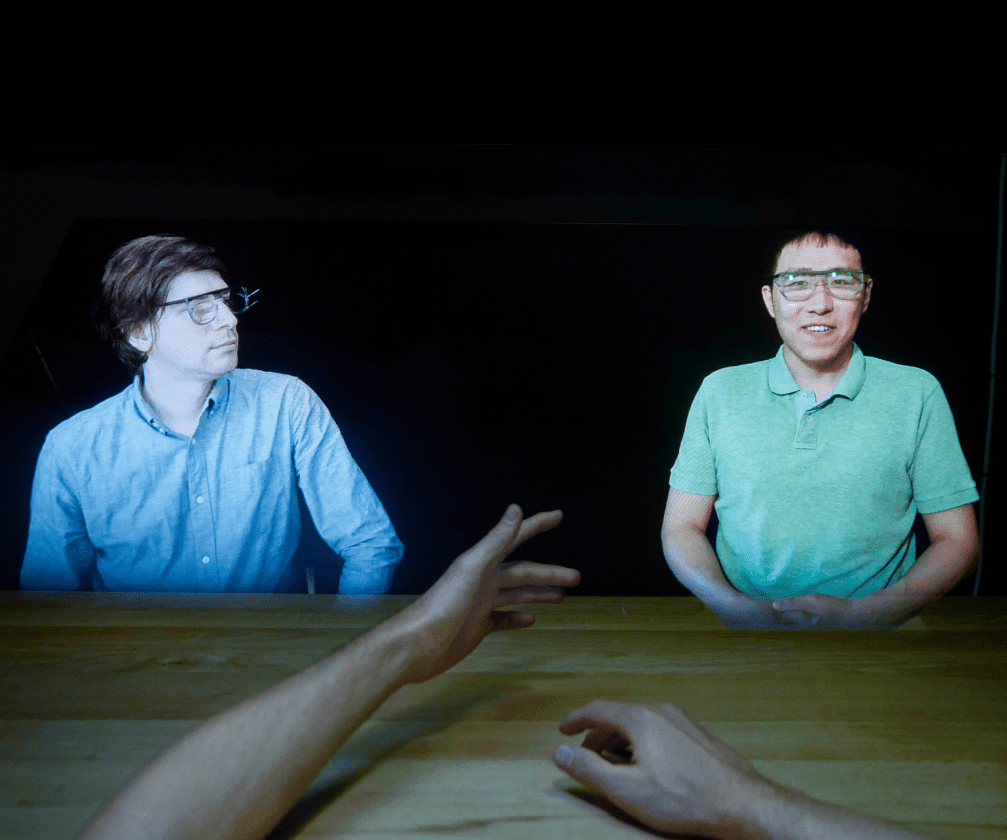
A “real” meeting between two people who are in different locations — this is the vision of the future of Fraunhofer IOSB alumnus Miro Taphanel and his collaborators. They want to rescue people from video telephony hell, as a large amount of non-verbal information is lost with conventional technology. In actual fact, this new form of communication is already in use. The founders of the Karlsruhe-based start-up hold regular virtual meetings from different locations and stand opposite each other virtually in full height. It certainly feels that way at least, thanks to Gixel’s augmented reality technology consisting of a camera, special glasses, screen, artificial intelligence and complex software.
US tech giants with billion-dollar budgets are also pushing their way into this market and want to make it possible to place people in different environments — but with completely different approaches. If Gixel achieves the technical breakthrough, then financial success looks to be a given. Before we are able to dive into the future of communication, the Karlsruhe-based company still needs to overcome a few technical challenges.
The prospect of solving a fundamental problem has also impressed the German federal government’s Federal Agency for Disruptive Innovation (SPRIND). SPRIND is therefore investing over 20 million euros in Gixel, an accolade bestowed on just a few start-ups.
Miro Taphanel studied mechanical engineering at Karlsruhe Institute of Technology (KIT). Even during his doctorate at KIT, he was in regular contact with Fraunhofer IOSB to exchange ideas on scientific topics. He then started working as a scientist for the renowned university, before moving to Fraunhofer IOSB to lead the “Variable imaging” group. In the summer of 2019, he founded Gixel together with IOSB scientist and colleague Ding Luo as well as experienced company founder Felix Nienstädt.
Your solution is often compared to the Holodeck, a fictional device from a science fiction series. Can you explain the idea behind the Gixel solution?
Our goal is to have a remote meeting that feels like the real thing. For this reason, we focus on the communication solution as a whole. With the aid of augmented reality, we create the illusion that objects, or in our case people, are in my room, my secure area. This is how we distinguish ourselves clearly from the virtual reality approach and thereby from the Holodeck, too. With our solution, you don’t have to wear a massive headset and you don’t leave your own personal sphere in order to enter another world. We augment our own reality with friends, acquaintances and colleagues, staying in the here and now. In this way, I retain all my abilities and can use my cellphone or notebook or even hammer a nail into the wall. If I was wearing a mixed reality headset, I wouldn’t attempt such a thing!
This limitless nature makes both communication and other scenarios conceivable. What approach are you taking here?
Sight is the most important sense, which we cannot match when we convert information initially into pixels and digital data, in order to then convert it again into something visual or analog. People need to retain their peripheral vision, just like in real life. We want to give people the superpower to incorporate things into this sense. The best thing is spending evenings with friends on the sofa, playing games or doing sport together.
We also use spatial audio. You hear your companion from where they appear in the room. We use face-to-face meetings with people as a reference. Because of this, we go one step further and don’t use volume control. If the person you are talking to in real life is talking too quietly, you can’t turn up the volume; instead, you ask them to speak louder.


